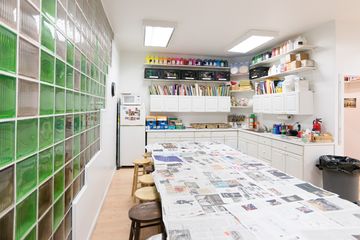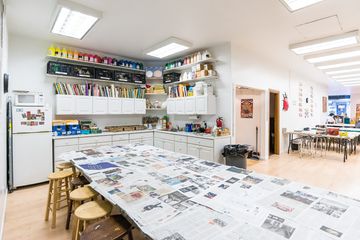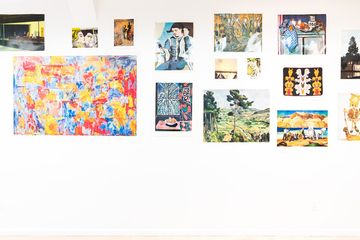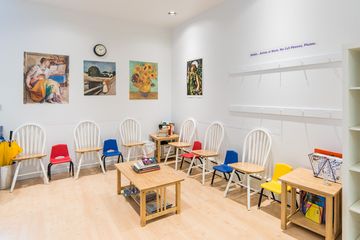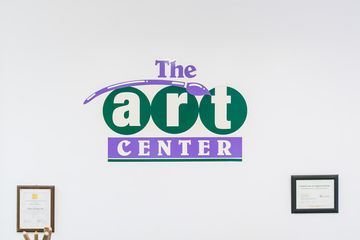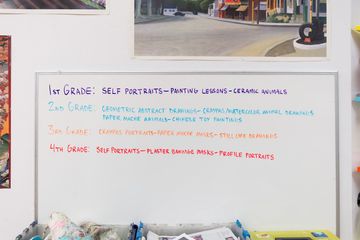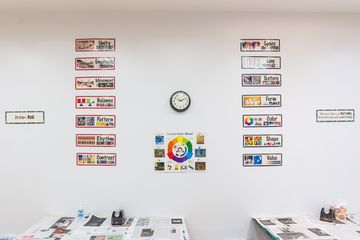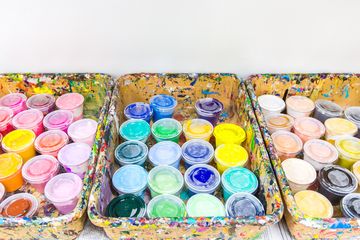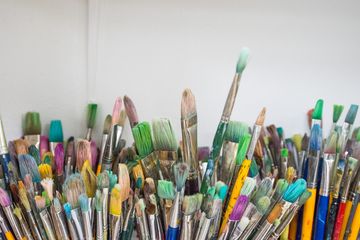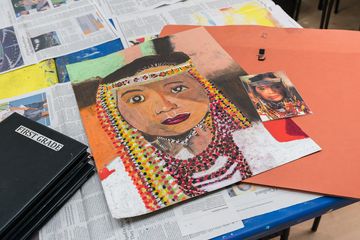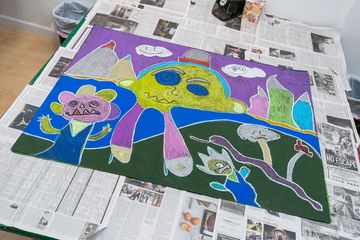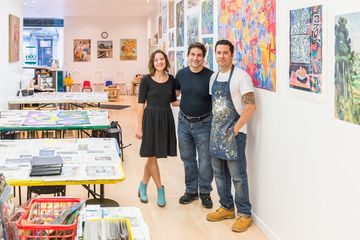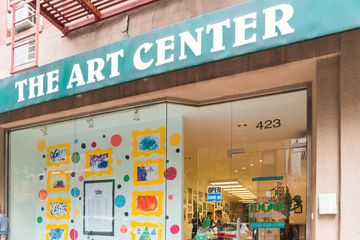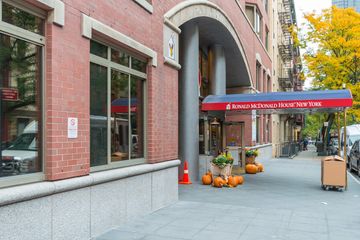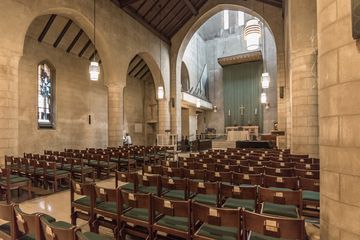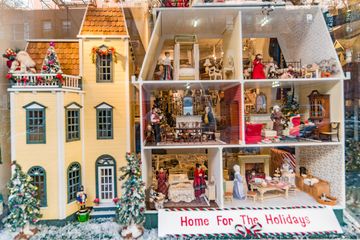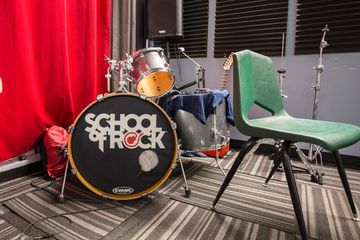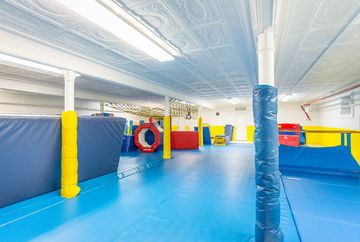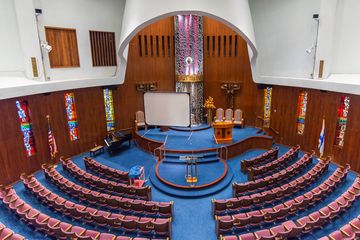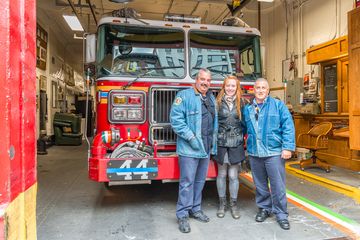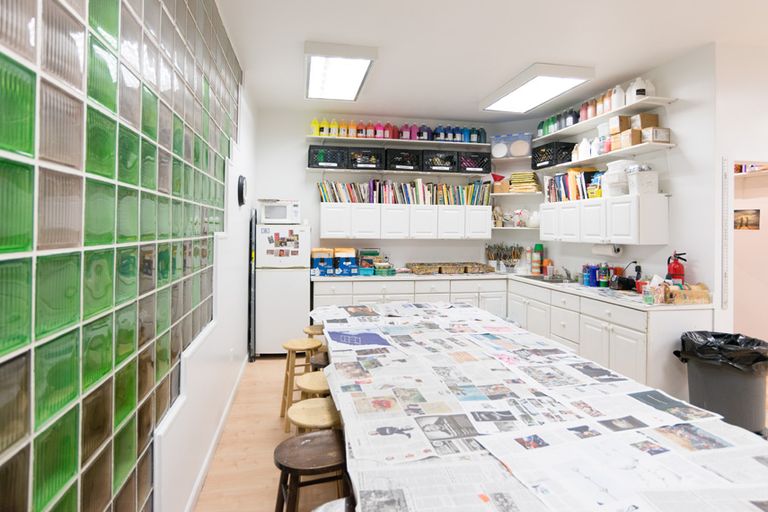
The magic of Mark Rosenthal’s instruction is that he knows exactly what children are capable of and how far he should push them with their art. He admitted, “I discovered the exact difficulty of each grade. That's why this works.” As he showed me around the Art Center, I was continually surprised by the work and the advanced skills that the children were able to exhibit. I became aware early on in my exploration that the Art Center does not just foster good technique, they "teach skills and love of the creative process.”
Mark started the Art Center nearby in 1994, but he had already been teaching in the neighborhood since 1985. He worked at the Town School, and because he was not formally trained as a teacher, he was sure to read all the books he could find on child development, teaching styles, and art in the classroom so that he could keep up with his peers. Mark spoke to me at length about Howard Garner’s idea that art should be reinstated as a discipline in schools and the Erikson theory of psychosocial development. After a few years at the Town School, Mark qualified for a sabbatical and it was then that he officially began his Art Center by renting space from other schools in the area.
Like Mark, who studied painting at Cooper Union and NYU, many of the other teachers in the Art Center are professional artists. I met Paul, an illustrator, and Melissa, a sculptor. Mark explained that he tries to have teachers from a number of different disciplines in order to make classes more interesting and to provide greater range of instruction to the students.
The Art Center is set apart from other schools by the fact that the classes are strictly kept to a five to one student/teacher ratio. This ensures that each student is able to receive individual instruction. The space allows two classes to happen simultaneously, with the age range from first grade up through adult. Looking at the curriculum for the different grades, Mark pointed out how the children will approach the same project from a different perspective as they get older. For example, first graders will create simple two dimensional self-portraits, but third graders are instructed on how to use shading.
Though I recognized a few projects as common to most children’s art classes, I was impressed by how many unique assignments Mark has given his students and how many fascinating pieces the children are encouraged to create. Even the 3D paper mache animals, which are a staple of most school art classes, were unlike any I had seen before. “A lot of kids do these, but we like to do it on steroids,” Mark boasted. One distinctive series I noted was a collection of Chinese paintings of toys. Mark told me that he found a book of famous Chinese toy art and thought that it would be a fun project for the kids, especially since each toy has a folk story attached to it. Some of their one-of-a-kind art projects arise out of serendipity: one year, the paint shipment did not arrive in time, so Mark created a workshop that involved coloring in different shapes. This assignment continues today.
It is evident that Mark is proud of what he has created, as well he should be, with the amount of research and training that has been put into the school. “We think of it as the best art school for kids out there. That’s how I designed it,” he said, matter-of-factly. He listed his experience in the field, his highly honed curriculum, and especially his amazing fellow instructors as the driving force behind his success. As Mark continued to flip through books of children’s work, appreciating much of it, he stopped, smiled, and announced, “The kids are what I love.”
